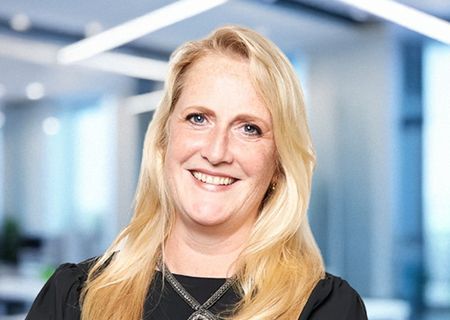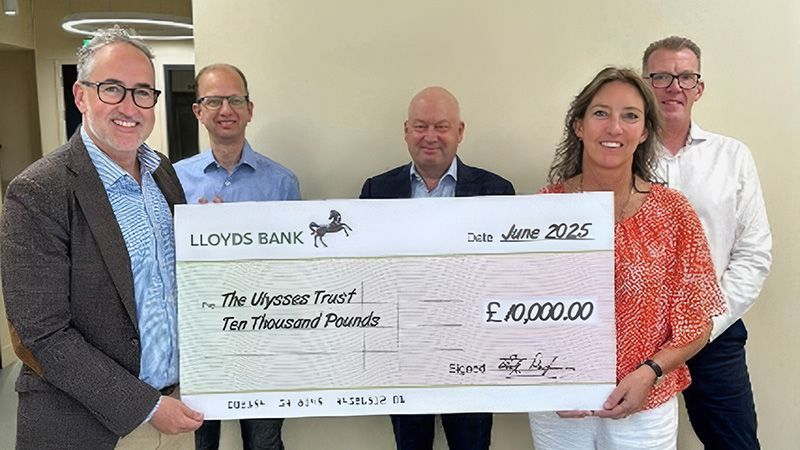Are Smart Cities in the UK about to Become a Reality?
Pioneering Technologies for the Future of Urban Transformation
Smart cities might sound like a utopian vision from the 1950s; something that sounds already out-of-date and perhaps even naive in our current geopolitical climate. But as urban spaces gradually implement a a series of technological leaps, the smart city emerges as a potential reality, offering a new way to unite communications with infrastructure via real-time feedback.
Smart cities could dramatically enhance our quality of life, efficiency, and environmental stewardship. Given that cities are significant contributors to global emissions — responsible for approximately 70% of greenhouse gases — they will play a critical role in reaching net zero.
Reflecting insights from the last Smart City Expo in Barcelona (November 2024) and a range of ambitious projects across the UK, this article delves into the strategic alignment of technology, infrastructure, and sustainability shaping today's urban landscapes.
What Defines a Smart City?
A smart city is fundamentally ‘a municipality that uses information and communication technology to increase operational efficiency, share information with the public, and improve the quality of government services and citizen welfare.’ While definitions vary, the overarching mission is to optimise city functions, drive economic growth, and enhance the quality of life through technology and data analysis.
Smart city initiatives typically require three critical components:
- Networks of sensors and citizen participation to collect data
- Connectivity linking these networks to government systems
- Open data sharing to make results, changes, and improvements accessible to the public
Developing this underlying infrastructure is complex and expensive. Crucially, it depends on strong relationships between government, the private sector, and citizens, as most of the work to create and maintain these data-driven environments happens through collaboration and public-private partnerships.

Smart Cities tap into a rich vein of scientific utopianism, characterised most recently by the Solarpunk genre in science-fiction art and fiction
The Digital Backbone of Smart Cities
Below we outline the primary technological transformations that underpin the smart city revolution.
Digital Networks and IoT Integration
The foundation of every smart city is a comprehensive digital ecosystem, seamlessly combining Internet of Things (IoT), high-speed connectivity, and intuitive platforms. Across the UK, expansive IoT deployments integrate sensors in buildings, transport systems, and urban environments, providing data in real-time that drives informed decision-making.
Connectivity and Speed
The deployment of ubiquitous high-speed 5G networks, alongside advanced fibre-optic infrastructures supported by significant governmental investments (£5 billion towards gigabit-capable broadband), enables the real-time data flow essential for a truly responsive urban environment.
For example, projects in Cambridgeshire have pioneered smart poles, multifunctional infrastructure housing lighting, sensors, and telecommunications, enhancing urban connectivity in a novel synthesis of form and function.
Transportation Reimagined
Intelligent transportation systems (ITS) lie at the heart of UK urban transformation, dramatically reducing congestion and vehicular emissions. AI-driven smart traffic management dynamically optimises signal timings based on live traffic conditions.
Initiatives like Sunderland’s autonomous vehicle trials illustrate the UK's forward-thinking approach to infrastructure, ushering in a future of integrated, sustainable mobility.
Data Analytics and Artificial Intelligence
AI is instrumental in shaping smart city functionality, enabling cities to preemptively manage resources, plan infrastructure developments, and swiftly respond to emergent situations.
Predictive analytics allow municipal operations to anticipate urban issues before they materialise — from congestion surges to water resource inefficiencies — reinventing cities from reactive to proactively resilient systems.
Digital Twins
Digital twin technologies, 3D digital replicas of urban environments, elevate urban planning to new levels of precision and foresight. These virtual platforms allow planners to rigorously model scenarios ranging from traffic dynamics and energy use to disaster response strategies, reducing uncertainties and enhancing outcomes. Coupled with virtual reality, digital twins offer unprecedented visualisation and simulation capabilities, exemplified by urban development projects and testbeds in Milton Keynes and Manchester.

How will living walls, urban farms, renewable energy grids, and automated transport systems transform how we work, live and move around in urban spaces?
Current Smart City Projects in the UK
Several groundbreaking projects are currently transforming UK cities:
Manchester's Triangulum Project
Part of the European Smart Cities and Communities Lighthouse Projects, Manchester City Council led a consortium with Siemens and local universities to transform the Oxford Road corridor into one of Europe's largest knowledge-driven, low-carbon districts.
The project's cloud-based energy management platform has reduced the area's dependence on the grid. If scaled citywide, this central controller could potentially save Manchester approximately 57,000t CO2 emissions annually — equivalent to removing 12,000 cars from the road each year.
Hull's Smart City OS: A Programmable City
Hull's full-fibre network, supported by an investment of £85 million from KCOM, provides the fastest broadband in the UK.
This robust connectivity has facilitated the development of a Smart City OS, built on Cisco's Kinetic for Cities platform by Connexin. The OS integrates 12 separate council IT systems, allowing for real-time management of public assets and services across the city. This centralised platform enhances data sharing and decision-making, improving service delivery in areas such as traffic management, health, and social care.
Glasgow to Create Europe’s Largest IoT Hub
In January 2024, Glasgow launched a £2.5 million collaboration with the UK Government, Glasgow City Council, and the Smart Things Accelerator Centre (STAC) to establish Europe’s largest IoT hub at ‘thebeyond’ in SkyPark, projected to host 100 companies by year-end.
Additionally, Glasgow is striving to become the UK’s first carbon-neutral city through a partnership with ScottishPower, focusing on decarbonised heating, expanded EV infrastructure, and grid investment. Deputy Leader Councillor Ricky Bell described the vision as transforming Glasgow into a tech-driven, globally leading smart city powered by innovative, sustainable solutions.
Bristol is Open (BiO)
Bristol Is Open (BiO) is a joint venture between Bristol City Council and the University of Bristol, established to create a programmable digital infrastructure for smart city experiments.
BiO has developed a secure research and development testbed, enabling companies to test and scale their technology solutions in a live network environment. Projects include smart mobility initiatives, such as a web-based solution utilising sensor data to guide people through cleaner air routes, and a simulated 5G water safety trial to enhance public safety along the city's harbourside.
Peterborough and the Circular Economy
Peterborough is one of the UK's first fully gigabit cities, thanks to CityFibre's full-fibre-to-the-premises network. This digital infrastructure supports IoT trials, such as those conducted with social housing provider Cross Keys Homes, which have improved resident wellbeing and reduced maintenance costs. The Circular Peterborough initiative aims to develop a fully circular economy by 2050, aligning with the city's commitment to sustainable growth.
The city has also created the Peterborough Accelerated Net Zero (PANZ) initiative, where edenseven, a UK-based sustainability consultancy with strong ties to Cambridge MC, has pioneered a groundbreaking digital platform. This system enables councils to accurately record, report, and monitor carbon emissions as well as facilitating the management of climate strategies and tracking intervention projects aligned with these efforts.
Read more about the initiative here: https://www.cambridgemc.com/peterborough-city-council-leverages-new-technology-to-reach-net-zero-targets
Smart Cities will Act as Laboratories for Sustainable Urbanism
Smart cities in the UK — including London, Bristol, Manchester, and Aberdeen — are testing grounds for technologies that harmonise urban efficiency with environmental stewardship. These cities exemplify how data-driven systems can reduce emissions and enhance resource efficiency. Below we look at some of the pioneering initiatives that are laying the foundations for sustainable urbanism.
Energy-Efficient Infrastructure
Bristol’s Smart City Programme, launched in 2011, employs open data platforms and IoT-enabled smart meters to reduce energy consumption in buildings. The city’s district heating networks, powered by waste heat from industrial processes, have cut CO₂ emissions by 40% since 2005. Similarly, Glasgow’s Future Cities Demonstrator project uses intelligent street lighting and real-time traffic management to lower energy use by 30% while improving public safety.
Sustainable Mobility Solutions
Transportation accounts for 27% of UK emissions, making electrification and smart mobility critical to net zero goals. London’s congestion-charging zones and electric vehicle (EV) infrastructure — including 13,382 public charging points — have reduced transport-related emissions by 13% since 2020. Meanwhile, Hull’s Smart Bus Scheme integrates real-time data and contactless payments to increase public transit ridership while cutting fuel use by 20%.
The Circular Economy and Waste Reduction
Manchester’s collaboration with Copenhagen and Bilbao under the FCDO Smart Sustainable Cities Project highlights the role of circular economy strategies in minimising waste. Initiatives like dynamic pricing for recycled materials and AI-driven waste sorting systems have diverted 65% of Manchester’s municipal waste from landfills since 2021.
Moving from Technological Fragmentation to a Smart Nation
Current progress is mostly at a city-level, but this raises certain questions about our vision for a smart ecosystem across the UK. Will we create an even greater technological divide between cities and rural areas? What plan is there to make remote areas smart?
Furthermore, without a unified technology ecosystem, efforts to modernise cities risk occurring in silos. This fragmented approach, where different cities adopt disparate technologies and systems, is not only slower and more expensive but also carries more risk. More importantly, it may lead to disconnected systems that cannot effectively communicate with one another, undermining the broader vision of integrated, smarter cities.
To accelerate the rollout of smart city systems and avoid the pitfalls of fragmentation, we should seek a collaborative ecosystem of technologies and partners.
A national framework would provide the following:
- Establish common technical standards for interoperability
- Provide procurement guidance to avoid vendor lock-in
- Create evaluation metrics for technology solutions
- Enable knowledge sharing between cities and partners
The Smart Cities All Party Parliamentary Group (APPG) has advocated for central government to create a framework of principles, rules, and standards for procurement to help local authorities implement smart city projects more effectively. Such a framework would enable cities to maintain control over their projects and associated data while ensuring compatibility with other urban centres.
Smart City Expo World Congress 2024: A Glimpse of the Future
At the Smart City Expo World Congress 2024 in Barcelona, we saw some exciting glimpses into the future. Here are our favourite technologies that were the most fantastic, earning a place in our imagined Solarpunk utopia.
Bioo: Urban Spaces Lit by Plants
Bioo’s bioluminescent Bioo Lux lamps—activated by human touch—transform ordinary greenery into interactive art installations. But the real magic lies underground: their Bioo Panel system uses microbial fuel cells in soil to harvest electrons from plant roots, generating clean energy while slashing irrigation needs by 50% and cooling urban heat islands by 4°C. Barcelona’s Diagonal Avenue is already constructing the world’s first biotech building using this tech, where gardens pay for themselves through energy savings.
NVIDIA: Agentic AI Meets City Planning
NVIDIA unveiled an AI blueprint that’s basically Jarvis for city planners. Their system digests live video feeds from thousands of cameras, letting officials ask questions like, “Show me all bike lane near-misses last week” or “Summarise pedestrian flow in central downtown.” Powered by generative AI and digital twins, it’s a bit like having an omniscient urban analyst working 24/7. During a panel, Deloitte showcased how this tech could simulate disaster responses in virtual replicas of cities.
Barcelona: A Smart Odour City
Barcelona itself demoed a scent-sensing network hidden in streetlights. Using AI-trained ‘electronic noses,’ it detects pollution spikes, garbage buildup, or even unauthorised bonfires. The system then dispatches cleaners or adjusts traffic flow, possibly even getting there before the rats sniff it out.
Make My Day: Electric Fleet Wizards
If the public are concerned about electric buses dying mid-route, Make My Day pitched an AI platform that optimises EV fleets down to the minute. Their algorithms predict traffic, weather, and even driver breaks to keep municipal vehicles charged and efficient. One case study showed a 30% reduction in downtime for garbage trucks.
Conclusion
The UK continues to be at the forefront of smart city development, with significant government investment supporting innovative projects across the country. From Bristol's leadership in city-wide innovation to Manchester's groundbreaking energy management system, UK cities are embracing technology to improve urban living, enhance sustainability, and drive economic growth.
For professionals interested in smart city technologies, the upcoming Connected North conference in Manchester presents an excellent opportunity to engage with industry leaders and learn about the latest innovations in this rapidly evolving field.
As cities continue to grow and face new challenges, the integration of smart technologies will be increasingly vital for creating sustainable, efficient, and liveable urban environments.
Get in Touch
We have a dedicated public sector team led by Craig Cheney, who is closely involved in Bristol's smart city and sustainability initiatives. This team of experienced public sector champions work alongside our digital infrastructure teams and our sustainability-focused sister-consultancy, edenseven, to provide a complete solution to support smart city digital transformation for local governments. We are particularly well-positioned to help with strategy, procurement, innovation and project implementation, as well as creating public-private partnerships to fund these complex programmes. Please use the form below to get in touch and find out more about our services.
Citations and Sources
[1] https://www.apm.org.uk/blog/five-of-the-uk-s-most-exciting-smart-city-projects/
[2] https://www.smartcityexpo.co.uk
[3] https://www.techtarget.com/iotagenda/definition/smart-city
[4] https://www.thenbs.com/knowledge/uk-smart-cities-study-updated-for-2017
[5] https://cities-today.com/uk-startups-demo-solutions-for-post-pandemic-smart-cities/
[6] https://newo.ai/insights/the-role-of-ai-assistants-in-smart-cities-and-iot/
[7] https://www.gov.uk/government/news/smart-tech-to-be-trialled-in-towns-and-cities-with-4-million-funding-to-boost-local-connectivity
[8] https://redknightconsultancy.co.uk/2025/01/07/uk-innovation-funding-trends-for-2025/
[9] https://researchbriefings.files.parliament.uk/documents/POST-PN-0656/POST-PN-0656.pdf
[10] https://www.thesmartcityjournal.com/en/cities/london-is-the-world-s-smartest-metropolis-according-to-iese-cities-in-motion-index
[11] https://www.startus-insights.com/innovators-guide/smart-city-startups/
[12] https://eu.eventscloud.com/file_uploads/2ed36ce5867a41381abc8a5861b7fcd7_UKSmartCitiesDirectory.pdf
[13] https://soracom.io/blog/iot-smart-city-trends-2025/
[14] https://www.gov.uk/government/publications/the-smart-data-roadmap-action-the-government-is-taking-in-2024-to-2025
[15] https://www.openaccessgovernment.org/smart-tech-in-towns-and-cities-a-1-3-million-pilot/166799/
[16] https://www.irwinmitchell.com/news-and-insights/expert-comment/post/102k10j/uk-cities-shine-in-european-cities-and-regions-of-the-future-2025
[17] https://bebeez.eu/2025/03/18/innovation-nation-10-of-the-most-promising-british-startups-to-watch-in-2025/
[18] https://www.ipsos.com/en/london-takes-first-place-2025-worlds-best-cities-report
[19] https://www.seedtable.com/best-smart-city-startups
[20] https://thoughtlabgroup.com/smarter-cities-2025/
[21] https://www.london.gov.uk/sites/default/files/smarter_london_together_v1.66_-_published.pdf
[22] https://www.innovationnewsnetwork.com/uk-smart-city-adoption/610/
[23] https://en.wikipedia.org/wiki/List_of_smart_cities
[24] https://www.citiesabc.com/resources/top-10-smart-cities-leading-the-way-in-2025/
[25] https://www.nucamp.co/blog/coding-bootcamp-united-kingdom-gbr-united-kingdoms-top-10-startups-that-tech-professionals-should-watch-out-for-in-2025
[26] https://techsouls.co.uk/top-10-uk-startups-to-watch-in-2025/
[27] https://www.tg0.co.uk/blog/technationals-top-25-startups-to-watch-in-2025
[28] https://en.wikipedia.org/wiki/List_of_unicorn_startup_companies
Appendix
Notable Start-ups and Tech Companies in Smart City Development
The UK's innovation ecosystem is rich with companies developing cutting-edge smart city technologies. This list is for reference purposes and further research.
Smart City Platforms and Infrastructure
- Athena Smart Cities: Developing comprehensive smart city platforms.
- N-Smart: Focusing on grid reliability solutions.
- Urban Smart: Specialising in EV usage optimisation
- Veniam: Offering high-speed internet and smart city services through connected urban vehicle fleets.
AI and Data Analytics
- Convergence Labs: Created "Proxy," an AI-powered digital assistant designed to automate and simplify daily tasks for professionals. Founded in 2024, they have secured €11 million to accelerate research and bring their vision to market.
- CuspAI: An AI-driven company revolutionising the discovery of breakthrough materials for sustainability and clean energy applications. Based in Cambridge, they have secured €27.6 million to advance their AI-powered materials research.
Urban Mobility and Transportation
- NTD Energy: Developing smart city mobility solutions.
- Ride Report: Providing cities with software platforms for running bike and scooter share programs.
- Carmera: Creating real-time 3D HD maps and navigation data for autonomous vehicles.
Waste Management and Environmental Monitoring
- Nordsense: Offering a SaaS-based smart waste management platform that helps optimise waste collection processes.
- Sensate: Specialising in air and water quality monitoring systems.
Future Events and Opportunities
The Smart City Expo UK, scheduled for June 24–25, 2025, in London, will bring together leaders from smart cities, innovative companies, and governments to discuss future trends in urban technology. The event will feature sessions on cybersecurity for smart cities, AI integration in city operations, metaverse applications in real estate, and sustainable urban development.
Contact - Smart City article
Subscribe to our insights
Blog Subscribe












